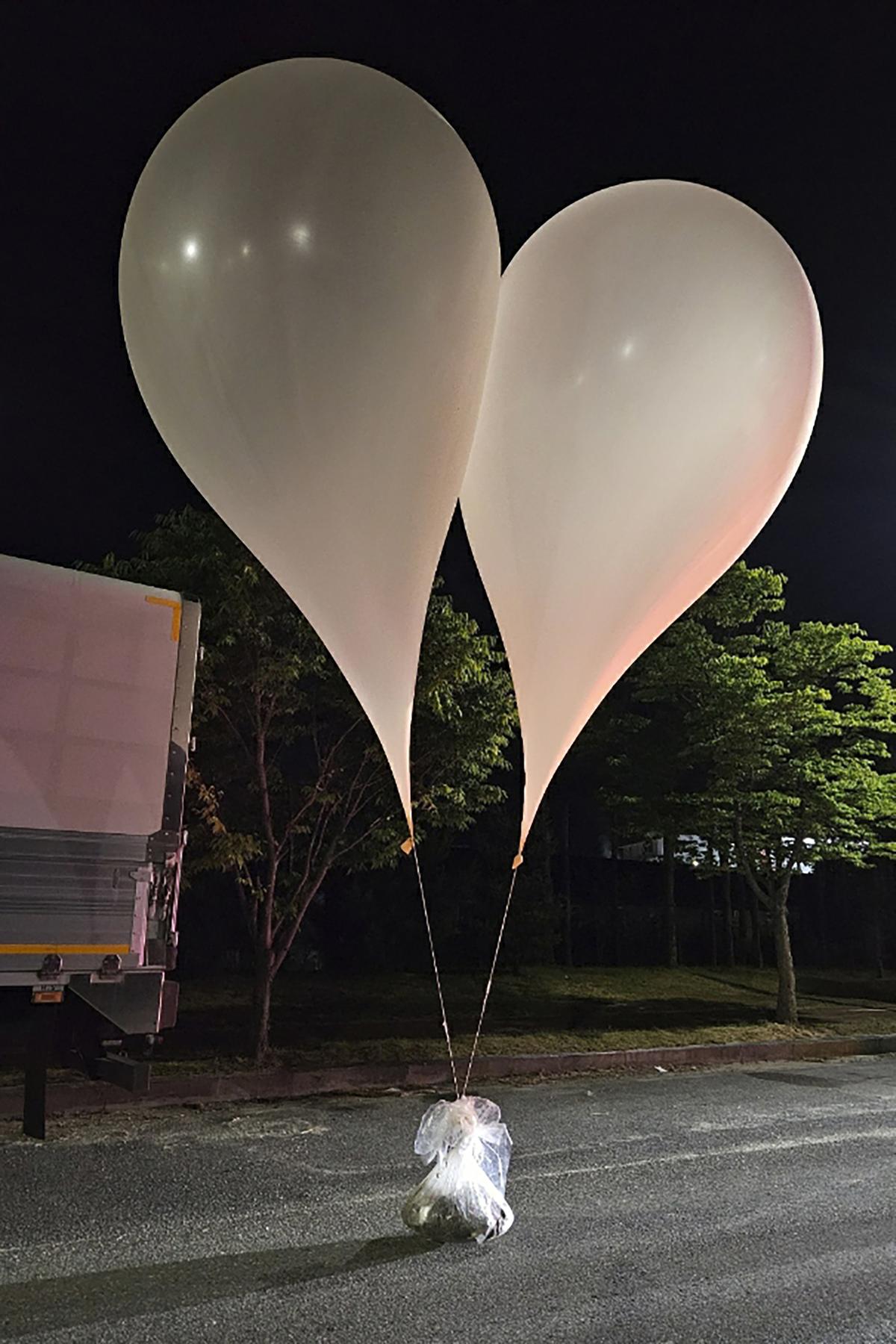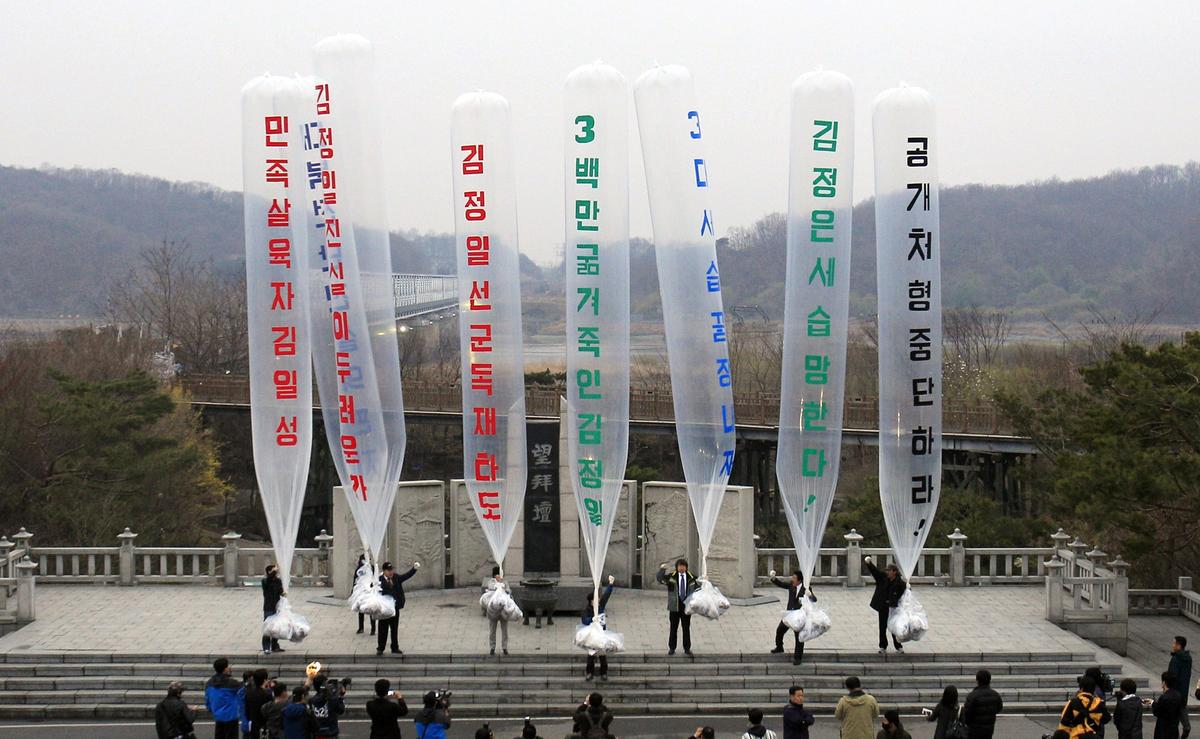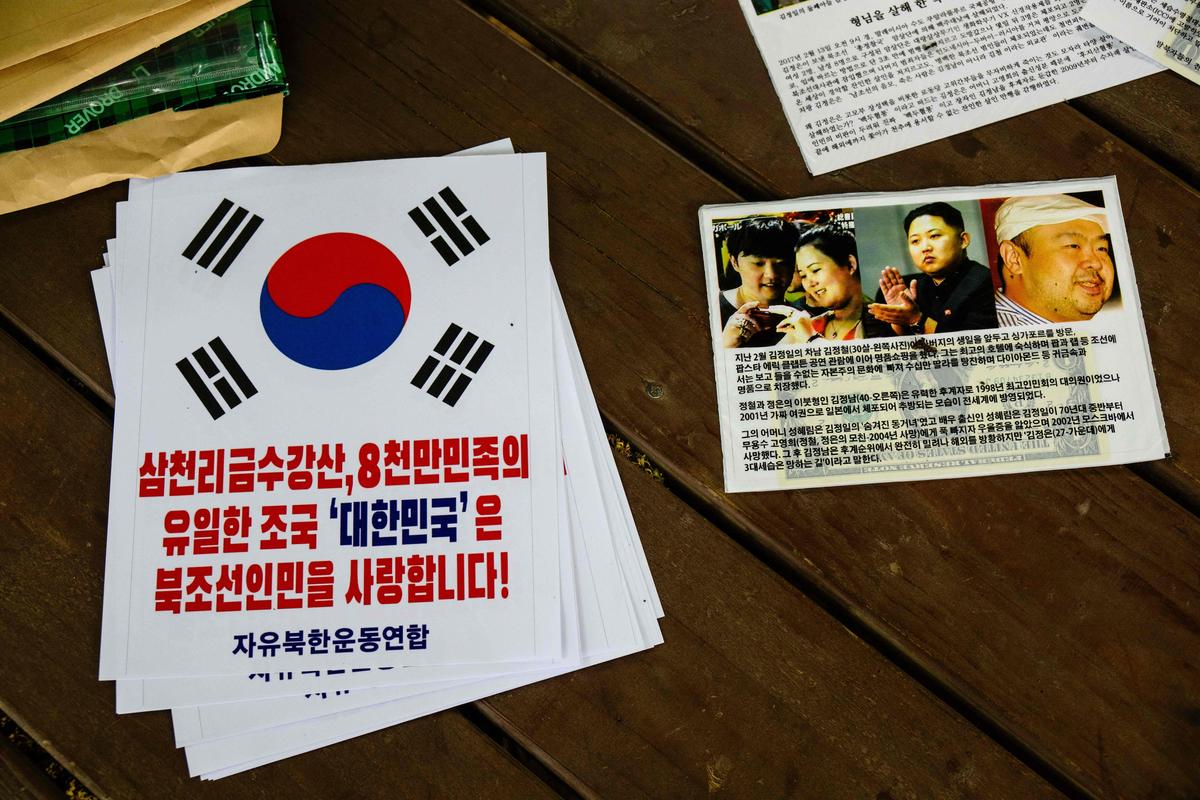A balloon carrying numerous objects together with what gave the impression to be trash, believed to have been despatched by North Korea, is pictured on the sea off Incheon, South Korea, June 9, 2024.
| Photograph Credit score: VIA REUTERS
What’s been taking place
The present “balloon struggle” isn’t a brand new battle, however an escalation of a long-standing propaganda tactic between North and South Korea. A timeline
- Might 2024: South Korean activists affiliated with “Fighters for Free North Korea” seem to have initiated the current escalation. It began with these activists sending round 10 balloons carrying leaflets crucial of the North Korean regime and USB drives containing South Korean media (Ok-pop, dramas) throughout the border. This wasn’t new, however absolutely was the tipping level.
- Late Might 2024: North Korea retaliated by sending a whole bunch of balloons laden with trash and probably even manure into South Korea. This was doubtless supposed to be a nuisance and present of defiance. The primary set of balloon assaults concerned round 250 balloons. The second wave, launched inside 15 days of the primary, consisted of roughly 300 balloons, with 80 touchdown in South Korea.
- Early June 2024: Tensions rose additional as North Korea launched one other wave of trash-filled balloons. South Korea responded by resuming loudspeaker broadcasts with information and knowledge crucial of the North Korean authorities, a tactic used previously. This occurred for the primary time since 2018.
- Mid-June 2024: Kim Yo-jong, the influential sister of North Korean chief Kim Jong-un, condemns the South’s actions, calling them a “prelude to a really harmful scenario.” South Korea views this as an escalation in threats.

FILE – This picture supplied by South Korea Protection Ministry, exhibits balloons with trash presumably despatched by North Korea, in South Chungcheong Province, South Korea, on Might 29, 2024. South Korea has lately retaliated for North Korea’s trash-carrying balloon launches with propaganda loudspeaker broadcasts at border areas. The South Korean broadcasts reportedly included Ok-pop sensation BTS’s mega hits like “Butter” and “Dynamite,” climate forecasts and information on Samsung in addition to outdoors criticism on the North’s missile program.(South Korea Protection Ministry by way of AP, File)
These balloons are giant, clear cylinders full of helium and carry messages written in Korean.
This balloon change is occurring in opposition to the backdrop of a bigger concern: North Korea’s nuclear program and the stalled diplomatic efforts to handle it.
The balloon struggle itself isn’t significantly harmful (aside from the environmental affect of the trash), but it surely highlights the delicate relationship between the 2 Koreas and the potential for a extra severe battle.
This “balloon struggle” is a part of an extended historical past of psychological warfare between the 2 Koreas.

FILE – Park Sang-hak, middle, a refugee from the North who runs the group Fighters for a Free North Korea from a small Seoul workplace, and South Korean conservative activists put together to launch balloons bearing leaflets condemning the North Korean chief throughout an anti-North Korea rally in opposition to the 99th anniversary of Kim Il Sung’s beginning, referred to as “The Day of the Solar,” on the Imjingak Pavilion close to the border village of Panmunjom in Paju, South Korea, on April 15, 2011. The balloons learn “Overthrow Kim Jong Il’s dictatorship.” South Koreans have been alert Friday, June 7, 2024 for attainable new launches by North Korea of balloons carrying garbage into the South, a day after Seoul activists flew their very own balloons to scatter political leaflets within the North. (AP Photograph/Lee Jin-man, File)
| Photograph Credit score:
Lee Jin-man
Historical past: What’s up with the Koreans?
The division of the Korean Peninsula dates again to the top of World Struggle II in 1945 when Korea was liberated from Japanese occupation. The peninsula was break up alongside the thirty eighth parallel, with the Soviet Union occupying the North and the USA occupying the South. This division was meant to be momentary, however ideological variations led to the institution of two separate governments: the communist Democratic Folks’s Republic of Korea (North Korea) and the capitalist Republic of Korea (South Korea).
In 1950, the Korean Struggle erupted when North Korean forces invaded the South. The battle lasted till 1953, ending in an armistice however not a peace treaty, technically leaving the 2 Koreas nonetheless at struggle. Since then, the peninsula has been marked by intermittent intervals of hostility and efforts at reconciliation, with ongoing tensions stemming from ideological variations, navy confrontations, and North Korea’s nuclear ambitions.

A leaflet (R) containing a US greenback invoice is seen subsequent to a poster (L) studying “Republic of Korea loves the North Korean folks” throughout an AFP interview with North Korean defector Park Sang-hak in Seoul on June 25, 2024. Park considers the propaganda balloons he floats into his homeland to be a part of a convention of psychological warfare, and vows to maintain going till Kim Jong Un’s regime falls. The son of a North Korean double agent who escaped his nation in 1999, Park has been sending balloons loaded with anti-regime propaganda leaflets, US greenback payments and USB drives of Ok-pop throughout the border for practically 20 years. (Photograph by Anthony WALLACE / AFP) / To go along with ‘SKOREA-NKOREA-DIPLOMACY-CONFLICT, PROFILE’ by Kang Jin-kyu and Cat Barton
| Photograph Credit score:
ANTHONY WALLACE
Use of balloons in psychological warfare
Using balloons for psychological warfare dates again to the Korean Struggle (1950-1953).
- Korean Struggle: The United Nations and South Korean forces used balloons to drop thousands and thousands of leaflets over North Korean and Chinese language troops. These leaflets contained messages encouraging defection and spreading information concerning the progress of the struggle.
- Chilly Struggle: America and South Korea continued to make use of balloons to ship anti-communist propaganda into North Korea. Balloons have been loaded with leaflets, radios, and different gadgets supposed to affect North Korean civilians and navy personnel.
How a psychological affect
These balloons might attain distant and closely guarded areas that have been in any other case inaccessible, spreading propaganda deep into enemy territory. Leaflets and broadcasts from the surface world might undermine the enemy’s morale and sow doubt among the many inhabitants about their authorities and its propaganda.
A balloon containing leaflets denouncing North Korean chief Kim Jong Un is seen close to the demilitarized zone separating the 2 Koreas in Paju, South Korea, March 26, 2016, on the sixth anniversary of the sunken naval ship Cheonan. The lettering on the banner reads “Cruel assaults on nuclear addict Kim Jong Un” (prime) and “Sprits of deceased 46 navy sailors on the sunken naval ship Cheonan need Kim Jong Un’s life.” (backside). REUTERS/Kim Hong-Ji
| Photograph Credit score:
KIM HONG-JI
‘Good balloons’
A bunch in Seoul referred to as “The Committee for Reform and Opening up of Joson” has give you a brand new strategy to ship messages to North Korea. They’ve constructed high-tech balloons they name “sensible balloons.” These balloons can fly far into North Korea and drop leaflets and even play messages with audio system. This can be a entire new stage of utilizing balloons to attempt to affect North Korea. Let’s see how these balloons work and what sort of messages they carry.
A monitor exhibits the GPS monitoring of balloons constructed by a Seoul-based activist group which can be designed to distribute anti-North Korean messages over North Korean territory in Seoul, South Korea, June 3, 2024. REUTERS/Kim Hong-Ji
| Photograph Credit score:
KIM HONG-JI
Quick details
These custom-made balloons utilise 3D-printed components and parts sourced on-line.
Every balloon prices round $1,000. (83 thousand INR appx)
Payload capability: As much as 7.5 kilograms of leaflets, audio system, or a mixture of each.
Leaflet dispensers: Programmed to scatter leaflets at intervals based mostly on climate situations.
Audio system with parachutes: These waterproof gadgets blare pre-recorded messages crucial of North Korea’s chief for as much as 5 days.
A member of a Seoul-based activist group, who’s a North Korean defector, units the time on a tool that will likely be carried by balloon to distribute anti-North Korean leaflets over North Korean territory, in Seoul, South Korea, June 3, 2024. REUTERS/Kim Hong-Ji
| Photograph Credit score:
KIM HONG-JI
Pre-programmed to scatter 1,500 leaflets, 25 at a time.
Designed to account for flight path, wind, and different climate situations.
Deploy with parachutes that open mid-flight.
Broadcast quarter-hour of pre-recorded messages in a North Korean accent, pausing for half-hour between periods.
Battery life: as much as 5 days.
A check run for a speaker machine connected to parachutes which is able to broadcast anti-North Korean messages after being carried over North Korean territory by balloon, in Seoul, South Korea, June 3, 2024. REUTERS/Kim Hong-Ji
| Photograph Credit score:
KIM HONG-JI
In 2020, the South Korean authorities banned the launches, citing considerations about escalating tensions with the North. Nonetheless, a court docket later overturned the ban, upholding freedom of speech. Some South Koreans oppose the balloon launches, fearing they provoke North Korea and endanger native residents. This authorized ambiguity, coupled with public worry of retaliation and North Korean threats, creates a contentious surroundings across the balloon campaigns.


